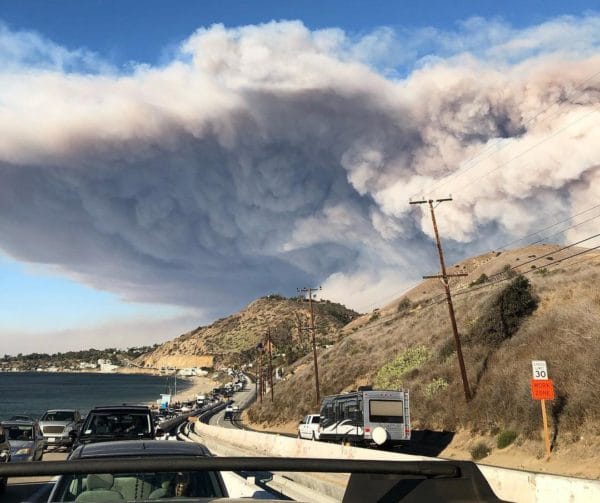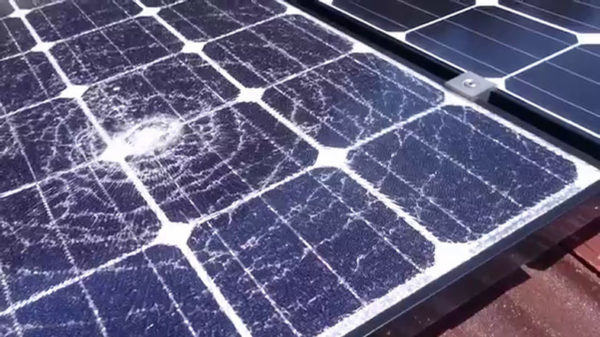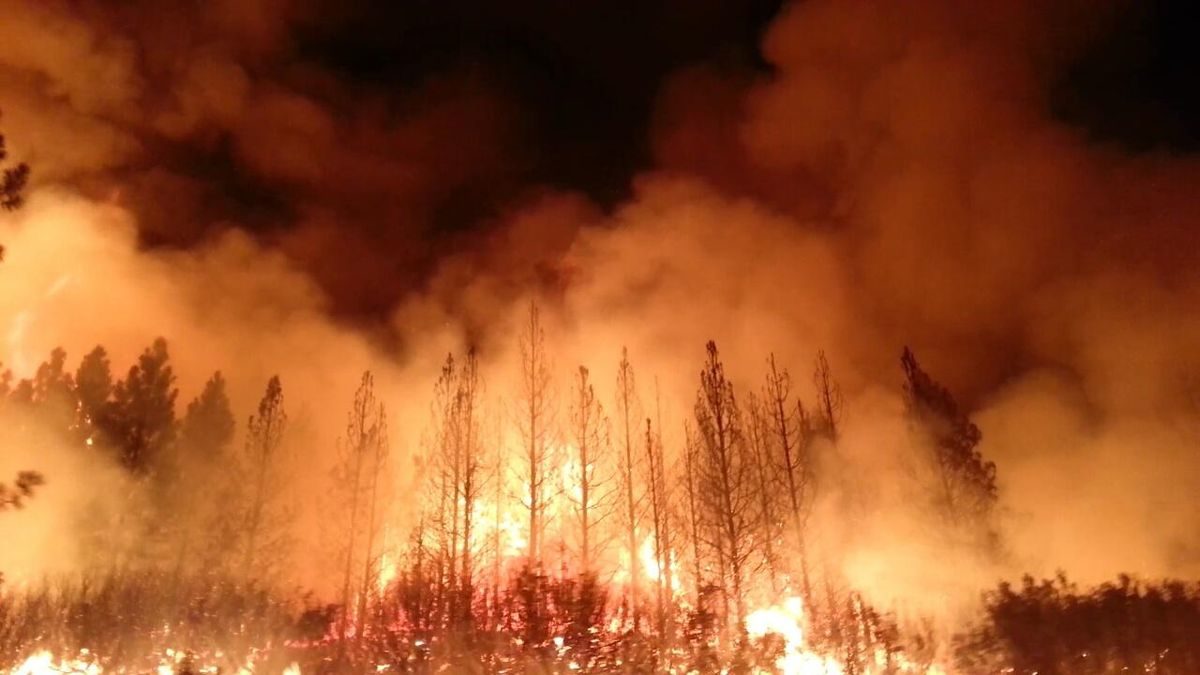The solar industry is at significant risk of facing large financial and energy deliverance losses this summer if nothing is done to mitigate wildfire risk over the coming months, according to renewables underwriter, GCube Underwriting Limited.
The risk is outlined in GCube’s ‘Hail or High Water’ report, which analyzed a decade of industry claims data. It found that roughly 50% of all claims for solar asset damage due to extreme weather were caused by wildfire.
GCube estimated that wildfires alone have cost the solar industry tens of millions of dollars in losses over the last decade.
Wildfires are growing in size, severity, and frequency across the Western U.S., driven by high temperatures and drought. In conjunction with insufficient fire risk management and record high temperatures sweeping the nation, it’s more likely than ever that fires will spread out of control and pose a risk to solar assets.

Image: Wikipedia/Cyclonebiskit
Additionally, given current international trade conditions, shipping difficulties and supply chain reformations, the risk of wildfire damage to solar infrastructure has been compounded. Strained supply networks mean damaged panels could take longer to be repaired or replaced, forcing whole arrays out of commission for months after the initial heatwave.
Not only could asset owners lose time, money, and generation if their project is damaged by wildfire, but they also could face legal responsibility for any resulting property damage to third parties. As a result, many insurance companies have started to put blanket wildfire exclusions in place across policies to mitigate their risk exposure .
This same strategy was instituted by insurers in wake of the 2017 Midway Solar Project, when the 178 MW installation was battered by a severe hail storm that left more than 400,000 of the plant’s 685,000 Hanwha Q cell modules damaged or destroyed and caused insurance losses that totaled $70 million.

In response to this and later hail-related losses, some insurers have began to offer specific hail insurance programs, called “parametric insurance.” These programs trigger coverage when a measurable hailstorm event occurs that exceeds a predefined threshold. The trigger for coverage and payout is determined by the size of the largest hail that falls on the solar project site.
Insurers, however, were no longer going to act as a fail-safe for developers who didn’t take hail risk and mitigation into mind in project planning. Prior to putting in place these policies and the overall hardening of the insurance market, there was little known about the catastrophic damage potential of hail. That meant developers would take out as much project coverage as they could, assuming that whatever losses they suffered from a hail event would be easily covered by insurance.
Midway ended that way of thinking.
And insurers are expanding that same approach when it comes to wildfires, with Fraser McLachlan, CEO of GCube. “Rather than enacting blanket exclusions, we want to work with our insureds to make sure they are taking appropriate action to prevent severe losses over the coming years, so that we can continue to provide them with cover.”
The only solution to this issue is data, McLachlan said. He said that to determine a project’s potential fire risk, developers need to look granularly on a case-by-case, site-by-site basis that is led by data.
This same approach was necessitated by hail after Midway, when data collection cottage industry emerged to help developers determine and mitigate risk. If this level of monitoring and data collection doesn’t ramp up in the coming months and years, the report warns that the solar industry could lose tens of millions of dollars.
This content is protected by copyright and may not be reused. If you want to cooperate with us and would like to reuse some of our content, please contact: editors@pv-magazine.com.









By submitting this form you agree to pv magazine using your data for the purposes of publishing your comment.
Your personal data will only be disclosed or otherwise transmitted to third parties for the purposes of spam filtering or if this is necessary for technical maintenance of the website. Any other transfer to third parties will not take place unless this is justified on the basis of applicable data protection regulations or if pv magazine is legally obliged to do so.
You may revoke this consent at any time with effect for the future, in which case your personal data will be deleted immediately. Otherwise, your data will be deleted if pv magazine has processed your request or the purpose of data storage is fulfilled.
Further information on data privacy can be found in our Data Protection Policy.